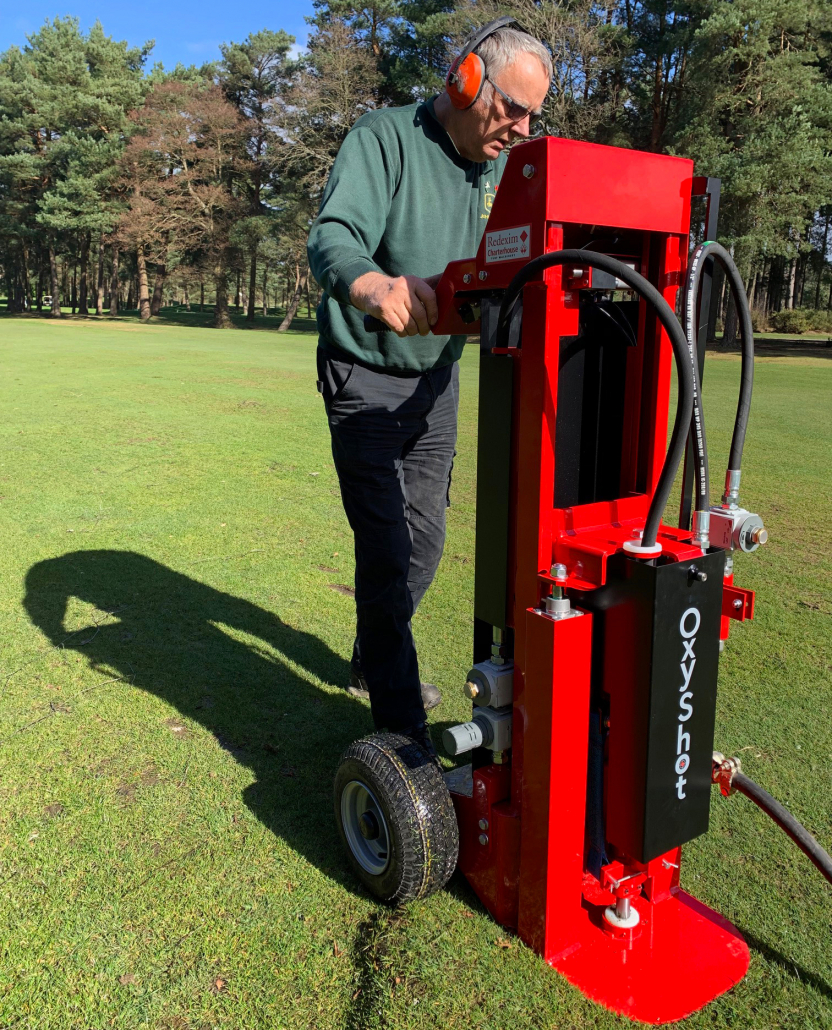Talk of the Toon: In meeting a host of people from the industry over the years, it’s not unusual to hear someone say they wished they’d moved into their role earlier in their career. So, when Duncan Toon uttered those very words during a visit to Warwick School it didn’t come as a complete surprise.
What was surprising, however, is that Duncan, who was appointed Grounds Manager at Warwick Independent Schools Foundation in June of last year, had come from an excellent job at one of the country’s top football clubs – and he is yet to dip his toe into his 30s!

As Deputy Head Groundsman at Birmingham City’s Training Ground, Duncan was dealing with highly skilled footballers, managers and coaches, and experiencing the buzz of Saturday afternoon home games or midweek matches under the lights at St Andrews. But it is the challenge of preparing eight hectares of natural turf and a brand new 3G rugby pitch for children of all ages which is now really getting his juices flowing.
The Foundation comprises King’s High School for girls aged 11-18 (incorporating Warwick Preparatory School for boys and girls aged 3-7 and girls aged 7-11) and Warwick School for boys aged 7-18. I met with Duncan at Warwick School, which is reputed to be the oldest boys’ public school in the world, having a history stretching, remarkably, back to 914. The focal point of the Warwick School’s sporting facilities is the truly magnificent sports pavilion, one that would do credit to many a County Cricket Ground.
The Halse Pavilion was revamped and modernised in 2013 and was opened by Lord Coe, just year after being Mr London Olympics.
“Working for top end football, at the elite end of sport, was rewarding but the focus was always football. The challenges and the rewards of moving to a multi-sport environment are massive,” said Duncan, as he showed me round his impressive place of work.
“Also, the investment levels schools now make in their maintenance facilities means there are fewer differences to football clubs than you might expect.”
In that regard, Duncan found himself to be very much the right man at the right time because his appointment coincided with a decision by the Foundation to invest significantly in its sports facilities. As a result, Duncan has benefited from being given the freedom to restructure and expand the team and to purchase a range of new machinery to enable the highest standards to be achieved.
Prior to Duncan’s arrival the small team was battling gamely, with minimal and aging machinery, to prepare pitches and keep the grounds under control. The schools were achieving huge successes in sport and winning national competitions, but the strain on resources was beginning to show and investment was needed to ensure pupils could continue to enjoy high quality sporting provision in the long term.
“When I first started, time frames for preparing pitches were tight, making us hugely vulnerable to weather disruption,” recalled Duncan.

“I came for my interview during, last year’s heatwave and the grounds were burnt up and not in the best of shape. The team was doing a great job, but it was clear additional resources were going to be needed. If it had been a wetter summer, with the grass growing, it would have been a real challenge to keep on top of it.”
That heatwave did, however, prove to be the silver lining around the rainless clouds – it’s a stupid meteorologically- based metaphor, I know, but run with it – as it was the catalyst for the first of the School’s major investments at the start of Duncan’s time at the school.
“The first thing we did was put in a borehole – it basically sold itself. I got in a specialist to advise us and within two months it had been approved and then drilled and it has helped us enormously. We have a license for 20,000 litres a day and we are no longer running static sprinklers off taps. That was expensive, so in the long run our borehole will save us money as well as make our lives so much easier.”
With that solution in place, next in line was the machinery.
“The school had invested in a Toro Sidewinder which is great, but we still needed bigger machines and our tractors were very old. I sat down with the Deputy Head of Estates & Operations, Sam Hanson in early March 2019 and we prepared a presentation to ask the Governors for additional investment, which they agreed. It has allowed us to purchase a number of carefully-selected machines to ensure we are fully resourced going into the future,” revealed Duncan.
Among them is the Dennis PRO 34R which has been a huge benefit on both presentation and clean-ups.
“We use it to clean the pitch up after rugby matches and also after training sessions and the brush on the front is a big bonus as it enables you to really get into the sward.
“You’re achieving two key maintenance tasks with it – you are cleaning up all the debris and you are also getting that amazing finish.
I’m really impressed with it.
“They have been arriving over the last few months and everything should be here in time for the start of the next academic year in September.”
With the machines coming on stream, Duncan then had to ensure that there was a quality team to utilise them. His first recruit was Scott Danter, who came from West Warwickshire Sports Centre and started at the same time as Duncan.
“He’s a brilliant worker with a real work ethic and bought into everything we were doing here,” said Duncan, who seems to have a magic touch when it comes to building a strong team, with both existing staff and the new staff recruited over the last 12 months being fully committed to the new regime.
Duncan’s new Deputy, Matt Barnes, was the second appointment, bringing experience in the independent schools sector. He was enticed by the Foundation’s “Project One Campus” which will bring all its schools together in one location by building a new home for King’s High, currently located in the town centre, on the same site as Warwick School and Warwick Preparatory School. King’s High is moving across this summer, with the final elements of the project delivered in September 2020.

Warwick School has historically been a noted rugby school, having produced many fine players in its time, but in reality offers outstanding opportunities in a range of other sports, as does King’s High. The site’s sporting provision allows for cricket, hockey, netball, athletics, rounders and more. It has meant a significant learning curve for Duncan, but he is making full use of the wonderful knowledge-sharing opportunities across the industry.
“I’ve been asking questions of everyone – left, right and centre – and having taken on staff with experience has been important too.”
Those whom Duncan has been grateful to learn from include Gary Barwell, of Edgbaston, current Groundsman of the Year, and Andy Richards, Head Groundsman of Shrewsbury School.
“Before getting the job and starting, I did a lot of reading up and Andy Lee, Head Groundsman at Birmingham Training Ground, helped me to get in touch with various people which was extremely helpful.”
Since taking over, Duncan has brought some of the approaches adopted for a regular match days at a top football club into life at the Foundation.
“Working at the training ground involved a busy schedule; there was a non-stop nature to the job and an awareness that you have to finish your job before someone else can start. That approach really helps a team to thrive and is one the revitalised team here has fully embraced.” he explained.
Ah, that team. It has doubled in size and is now six strong: it says much for the endeavours of the team before Duncan’s arrival that even now they have to work flat out to maintain a site measuring 11 hectares all in.
Having received everything he has asked for over the first year of his time in the job, Duncan has put himself under pressure to deliver on all fronts.
“A healthy sense of expectation is what we all need to give of our best. The whole team wants better, and we have been empowered to achieve it. We’ve got a fantastic team and some great machines. The only way I can see us going is up.”
The 3G rugby pitch, with its bright blue border, sits at the heart of the facility and Duncan has ensured that some of the new machines purchased were made to ensure that expensive new pitch was cared for throughout its lifespan. “You must invest in machines to maintain the 3G because they aren’t maintenance free. A lot of hours go into keeping it up to a top standard.”
“With the industry growing so fast, I like to take advantage of the new technologies coming out. Our initial athletic and rugby markings are done by GPS, saving time and making sure the markings are perfect.”
Listening to Duncan, he comes over as unflappable and organised and when he says that his ambition for where the school will be in five year is to have standards as high as is possible – “I really think we will be up there” – you can’t help but believe him.
The good news for Duncan is that when it comes to ambition – being on the desirable side of 30 – he will have plenty of time to fulfil them.






















